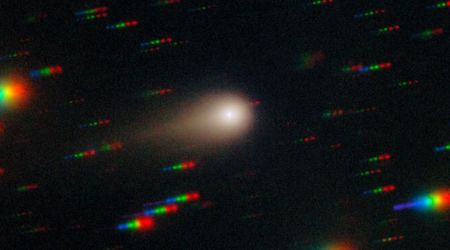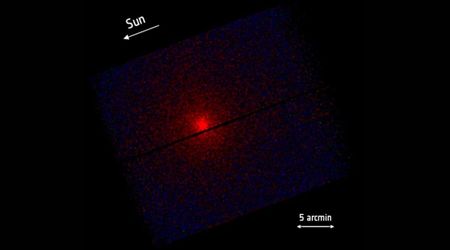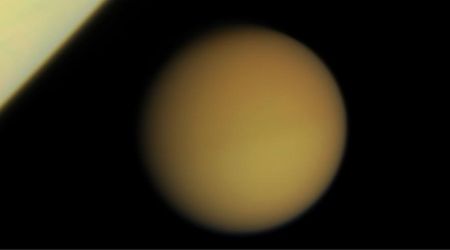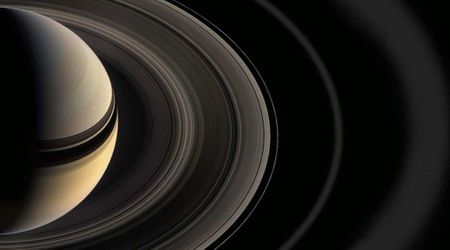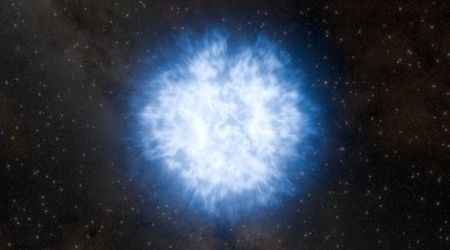The Different Types of Galaxies in The Universe


As humans, we are often overcome by an intense curiosity to understand how things work.
But as we learn more, we often find that it is more complicated than we originally thought, with similarities and differences more numerous than we could have imagined.
We make classifications to help us understand how similar individuals work within the system as their own group and in interactions with other groups. These classifications are updated as we continually better understand the system through observations.
Over the centuries, as technology and our knowledge have grown, we have been able to classify the different parts of our universe, including the massive islands of stars, gas, dust, dark matter, and smaller elements within stellar systems that we call galaxies.
How do astronomers classify galaxies?
Although a common topic today, the idea of galaxies is new. In only 1920, the Great Debate raged on whether fuzzy objects spied in telescopes that didn’t look quite like stars were cloudy nebulas (star-forming regions within our own galaxy) or something never considered before: other “islands” of countless stars out there in space. Edwin Hubble, with the help of Henrietta Swan Levitt’s work on calculating star distance, confirmed that the largest fuzzy patch was actually another “galaxy” full of stars in 1924.
It wasn’t the only one and as the observations increased, classification became necessary to understand the formation of galaxies and of the universe; shape became the differentiator.
What are the 4 main classifications of galaxies?
Hubble created the Hubble Sequence classification system in 1926, which tends to be used by both professional and amateur astronomers today.
This tuning fork diagram shows the types of galaxies: Elliptical, Lenticular, and Spiral. A fourth class, the Irregular Galaxies, was added to include all the galaxies that didn’t fit those requirements.
Elliptical galaxies appear spherical or oval-shaped while spirals are characterized by their spiral arms of gas and dust in a disk shape.
Lenticulars are between an elliptical and a spiral, having a bright central bulge and an extended disk structure. They aren’t always included in the 4 main classifications, either dropping the number down to three or adding barred spiral galaxies instead. A few examples of lenticular galaxies include:
- Centaurus A: the fifth brightest galaxy in the sky, located in the Centaurus constellation
- M86 in the constellation of Virgo
- NGC 2787 in Ursa Major (the Big Bear)
Now, let’s delve deeper.

Spiral Galaxies
Spiral Galaxies are often seen as the most striking and recognizable with their spiral arms. In some, a bar of stars runs through the central bulge, which is why they are called barred spiral galaxies. Within the classification of spiral galaxies, there is a range of formations from tightly wound spiral arms to very loosely wound spiral arms, bulges with various levels of brightness, and different concentrations of stars within different areas.
Some examples of spiral galaxies include:
- M31 (Andromeda Galaxy): the nearest galaxy to our Milky Way; fairly easy to find in the constellation Andromeda even with the naked eye on moonless nights
- M51a (Whirlpool Galaxy) in the constellation Canes Venatici (under the tail of Ursa Major)
- M104 (Sombrero Galaxy) in Virgo
- M101 (Pinwheel Galaxy) and M81 (Bode’s Galaxy) in Ursa Major
- M33 (Triangulum Galaxy) in the Triangulum constellation; binoculars recommended
Some examples of barred spiral galaxies include:
- M66 (member of the Leo Triplet) in the constellation of Leo; M65 and NGC 3628, the two other members of the Leo Triplet are regular spiral galaxies
- M95 is not far from the Leo Triplet, making a great set of galaxies to spot relatively close together.
- NGC 1365 (Great Barred Spiral Galaxy): a double-barred spiral galaxy in the constellation Fornax

M51 is a 400 million years old spiral galaxy located 31 million light-years away from Earth.
Elliptical Galaxies
Elliptical Galaxies (counting for a third of all observed galaxies) are fairly spherical, smooth clusters of stars, ranging in their degree of ellipticity from nearly circular (E0) to oval/ elongated (E7).
There is a great number of elliptical galaxies in Virgo including M49. M59, M60, M84, M86, and M87. M87 is one of the best-known ellipticals, a behemoth of a galaxy more massive than 3 trillion Suns, and with a diameter of up to half a million light-years!

Hercules A is a supergiant elliptical galaxy located 2.1 billion light years away from Earth. Credit: NASA, ESA, S. Baum and C. O'Dea (RIT), R. Perley and W. Cotton (NRAO/AUI/NSF), and the Hubble Heritage Team (STScI/AURA)
Irregular Galaxies
Galaxies with no regular structure are defined as irregular and are often subclassified into two sections:
- Irr I galaxies: asymmetrical, lack both a central bulge and spiral arms, feature individual clusters of young stars
- Irr II galaxies: more irregular, without easily resolved individual clusters
They may have been formed by past collisions of galaxies.
Some examples of irregular galaxies:
- M82 (the Cigar Galaxy), companion to spiral galaxy M81 in Ursa Major
- Large and Small Magellanic Clouds are easily seen in Southern Hemisphere dark sites
- NGC 1427A in the Fornax constellation and similar to the Large Magellanic Cloud

IC3583 is an irregular galaxy located 30 million light-years away from Earth. Credit: ESA/Hubble
Peculiar Galaxies
Modern astronomy classification tends to delineate Irregular Galaxies as Irregular or Peculiar with Peculiar Galaxies often described as being unusual in size, shape, or composition. Halton Arp created the Atlas of Peculiar Galaxies in 1966 to catalog them.
Other definitions state that Peculiar Galaxies hold more of a cohesive (but unusual) shape/ structure compared to the Irregular small dwarf galaxies that exhibit loose star clusters formed without any distinguishable shape. NASA GSFC details that Peculiar Galaxies are ‘peculiar’ due to collisions that warp the overall shape. An example is ARP-MADORE0002-503 which has three spiral arms, while most have an even number.
Special mention: Green Pea Galaxies
Two days after the citizen science project Galaxy Zoo launched (enlisting the help of volunteer amateur astronomers/ astronomy enthusiasts in classifying images of galaxies), weird green objects that could be galaxies showed up in the forums.
The growing group of citizen scientists called themselves the "Peas Corps" (a play on the Peace Corps) and took up the call "Give peas a chance" as a play on the John Lennon song "Give Peace a Chance".Jokes aside, the green blobs were soon verified as galaxies. The images were taken by the Sloan Digital Sky Survey and appeared green as the telescope detected the spectra for highly-oxidated oxygen.
Over the years, we have learned these “(green) pea” galaxies are rare, relatively small (no bigger than 16,300 light-years across compared to our Milky Way‘s 100,000 light-years) with a density about 2/3s less than normal and very high rates of star formation.
How do galaxies get their shape?
We’re not exactly sure. Based on data simulations, galaxies began forming about 300,000 years after the Big Bang. Hydrogen and Helium were prevalent and expanded in areas of different densities, allowing denser groups to clump together. Gravity collected this gas and dust and created the first stars that quickly died out. Over time, these groups of gas and dust formed bigger and bigger formations, each forming and collapsing as time went on, crushing more and more material together and eventually forming spinning disks where new clusters of stars formed in halos of gas, dust, and dark matter. While most of the galaxies were formed early, we have found some galaxies that were only formed a few billion years ago.
Despite a common misconception, data shows the early universe was mainly composed of spiral and irregular galaxies while elliptical galaxies were actually formed from mergers of the two over time. The formation of lenticular galaxies is still uncertain with varying data, simulations, and hypotheses.
Galaxies form over eons through millions of interactions between objects from the atomic to the stellar level. All of these interactions in that area over that period of time determine how that galaxy forms and appears.
We continue to observe and learn with the help of newer, better technology like the recently launched James Webb Telescope, better computer simulations, an ever-growing bank of knowledge, and volunteer citizen scientists who help professional astronomers work through massive data sets.

In the above image, two galaxies can be seen merging together.



